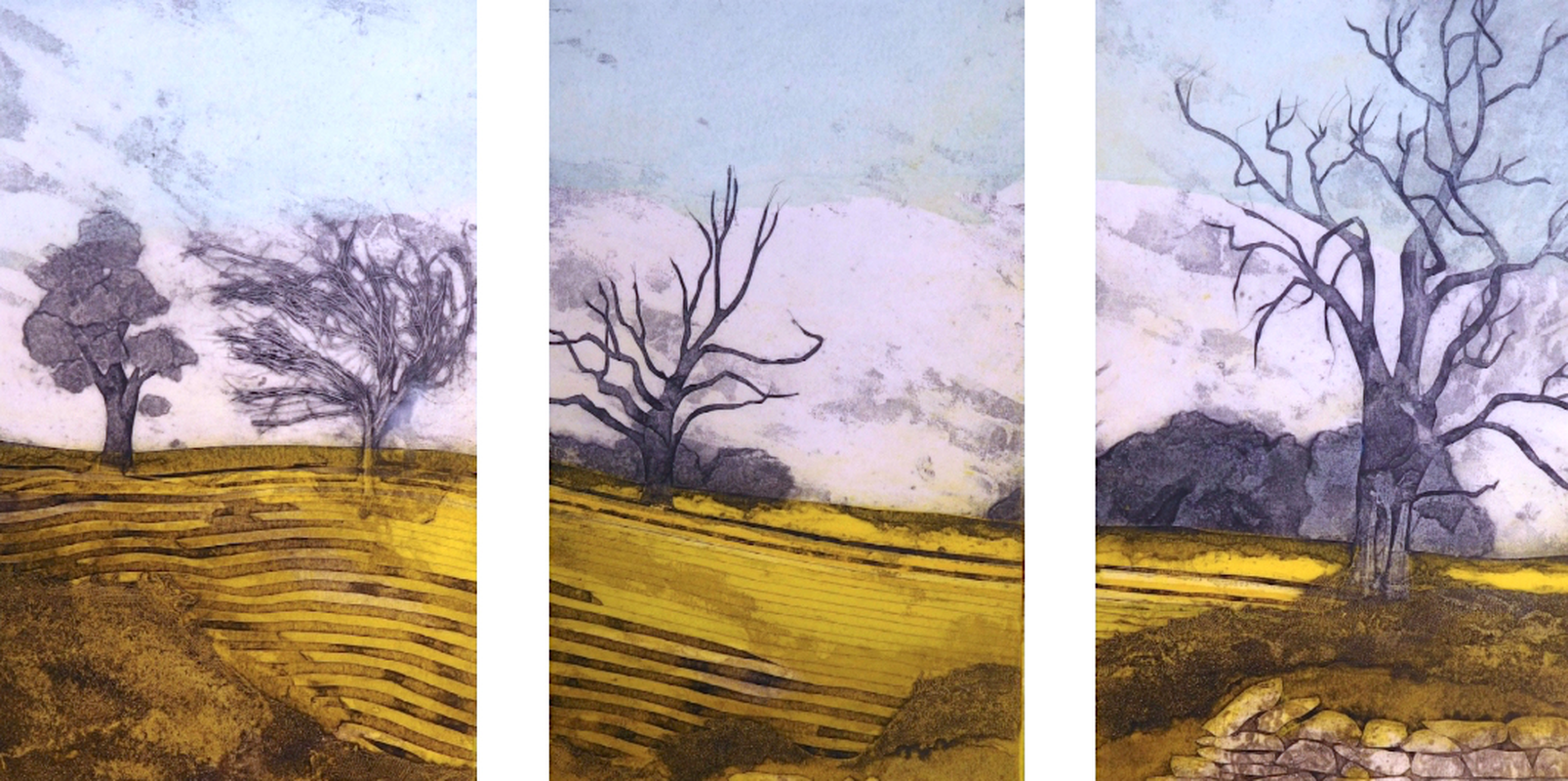
SARAH ROSS-THOMPSON AND THE ART OF COLLAGRAPHED PRINTS
I interviewed artist Sarah Ross-Thompson whose exceptional Collagraphed prints use fabrics, lichen, porridge and string to create images of the dramatic Scottish Highlands where she
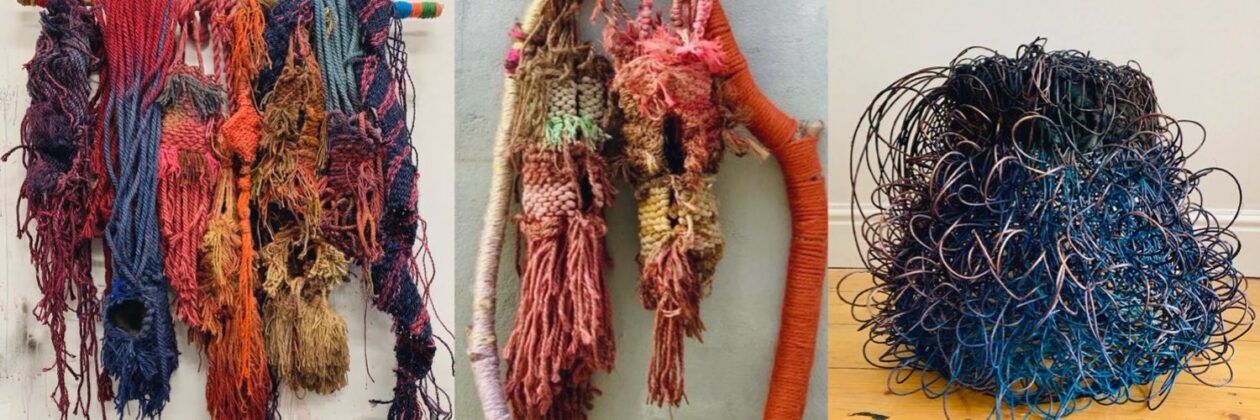
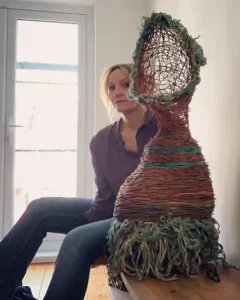
I interviewed Blandine Martin who uses “…weaving , basketry, woodworking to create installation and semi-sculptural work. ” Blandine’s concerns for memory are often expressed through doodling, recyled packaging and repurposed objects. Her deeply-psychological artwork has been exhibited in several metropolitan galleries in the UK and France.
Leslie: Could you describe what you do as a weaver and basket maker, please.
Blandine: I set out to learn some basic basketry & weaving techniques in order to incorporate those skills into my art practice. So I consider myself more of a mixed-media opportunist than a weaver! In life in general I’m naturally curious about how things are made so I proactively explore what I need to learn to create something. Also, it’s important to my art to keep up the element of personal excitement.
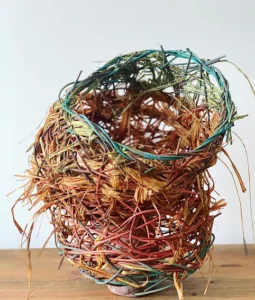
Recently, I’ve been working with textiles – and that has opened up a whole new world of possibilities for my upcoming project called 3 am. This is my most personal project, using inherited family objets including 4 antique french chairs which were found in a sad state in my mother’s garage
Leslie: How do your broken chairs relate to your family, please?
Blandine: The chairs belonged to my great-great-grandmother on my mother’s side . We found them after she passed away in 2018. They were rotting away and riddled with woodworm, plus all the upholstery had gone. It was poignant and symbolic to see their ‘skeleton’ frames. Very quickly I made the decision that they would have a life again. As it turned out , it was not just about mending the chairs but also mending my relationship with my late mother. Through the chairs I began to come to terms which her death and our complicated relationship.
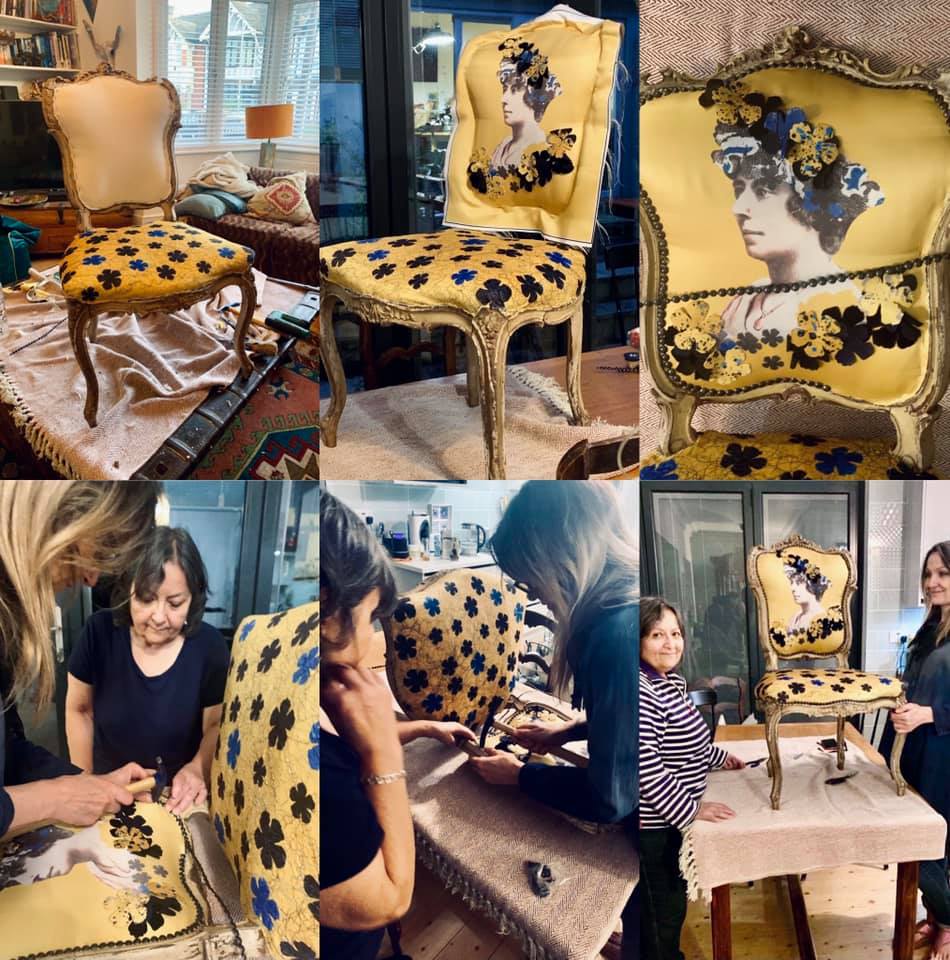
I learned upholstery with a close friend Bernadette D’Almeida . It is interesting to me how the chairs have evolved and allowed me to have a dialogue with the past – in effect the past became my present through restoring them . At times , it was really hard emotionally – but magical all the same. To see the chairs ‘becoming whole’ again was very healing .
It’s an act of love. It represents grieving but also looking forward to the future, my children and the next generation. It’s ‘tribute art’ if you like.
The chair will be exhibited at the City Lit in July 2022 with other work from my textile group “Material Differences “ Please follow me on Instagram or Twitter for updates .
Leslie: What’s the artistic purpose behind your doodling?
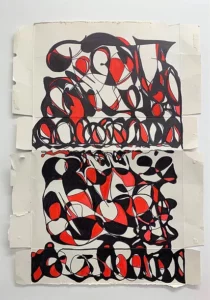 Blandine: I started using doodling on empty packaging at the beginning of the first lockdown . It was a way to be creative at home without the need of studio space or tools . To work in a contained way engages you differently, it’s also very calming . Actually, I have used doodling techniques with students from my secondary school as a mindful exercise tool . They did create some really fabulous colourful work and enjoyed the process of letting go and to just follow the line.
Blandine: I started using doodling on empty packaging at the beginning of the first lockdown . It was a way to be creative at home without the need of studio space or tools . To work in a contained way engages you differently, it’s also very calming . Actually, I have used doodling techniques with students from my secondary school as a mindful exercise tool . They did create some really fabulous colourful work and enjoyed the process of letting go and to just follow the line.
Leslie: What’s the story behind your sculptures inspired by a Rajasthani village?
Blandine: In 2014 I read an article about this man called Mr Paliwal who planted 111 trees, one for every baby girl born in a village in Rajasthan. Mr Paliwal, with the support of the girls’ families, has transformed not only the ecosystem of the region but also provided a safe village for girls to be educated. The fruits produced in the oasis are sold, so economically it makes sense too. I have met his nephew Manoj in Marseille. We Skyped Mr Palliwall while sitting in a cafe & we saw the whole village was behind him waving. It was wonderfully surreal. On a personal level , it touches me too because my children have dual heritage , Indian & French, so it made perfect sense to keep telling their story through sculptures. There are wonderfully people out there doing wonderful things, and that alone keeps me going .

Leslie: As a creative person, what routines/habits/rituals/obsessive acts are part of the process of getting ideas and executing projects? What helps and hinders your creative process?
Blandine: My routine is pretty simple. I work and/or engage with art every single day. How long I work does always depend on what’s going on in the household, but making art is something that is profoundly woven into my every day rituals. It isn’t separate from my life. Also, ideas come while you work, so the more I work the more ideas are available to me. Though I do make a point to see and engage with other artists. We work in solitude mostly, so getting out of my own head to bounce around ideas or just talking with others has always benefited me, even if approaches are different .
Next week Katy Wimhurst who is housebound with M.E. writs about her debut collection of short stories, Snapshots of the Apocalypse.
ABOUT LESLIE TATE’S BOOKS:

I interviewed artist Sarah Ross-Thompson whose exceptional Collagraphed prints use fabrics, lichen, porridge and string to create images of the dramatic Scottish Highlands where she
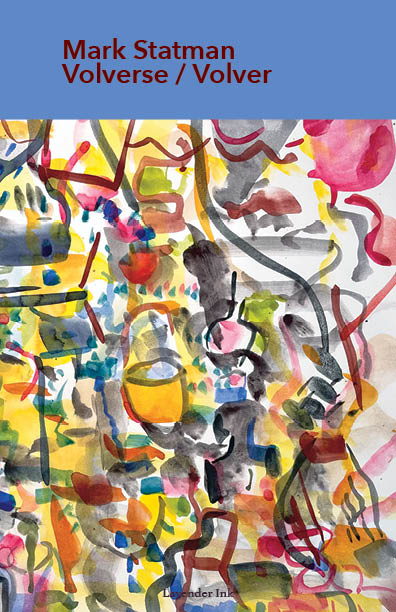
Part 2 of my interview with Mark Statman looks closely at Mark’s Latin American poetic influences, his life in Mexico and ends with an extract
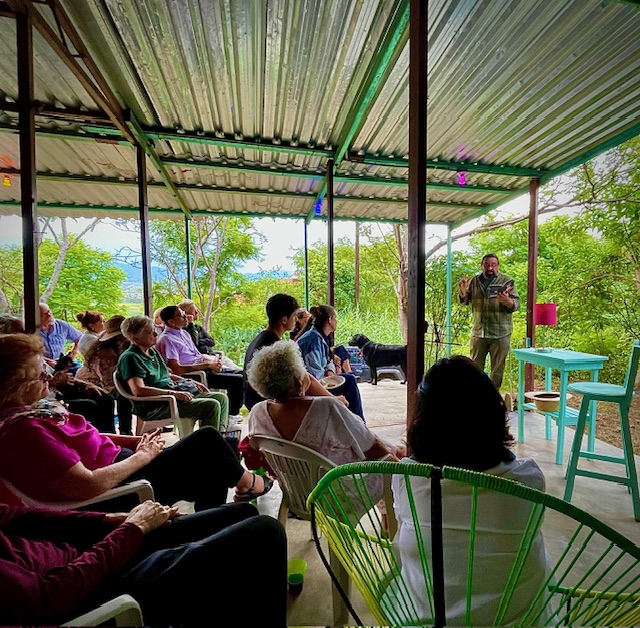
I interviewed international poet and translator Mark Statman about Volverse/Volver, his 14th published collection. Mark, who has won national arts awards, is Emeritus Professor of Literary

I interviewed Lisa Dart, finalist in the Grolier, Aesthetica and Troubadour Poetry Prizes and author of The Linguistics of Light (poems, Salt, 2008), Fathom (prose
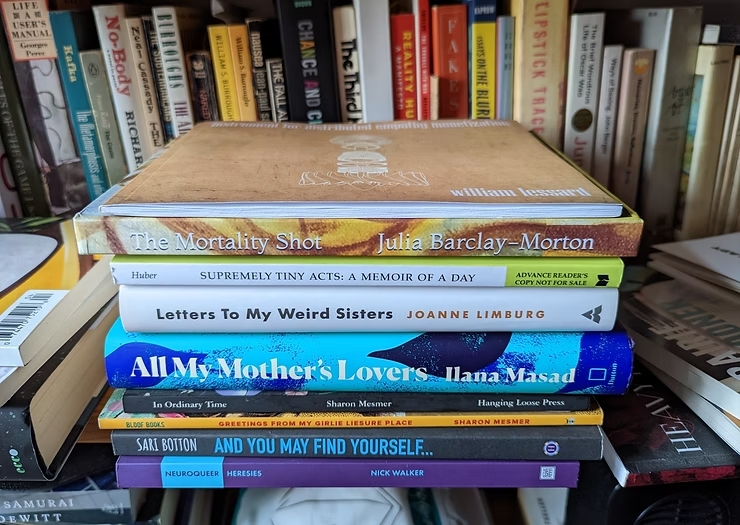
I interviewed writer Julia Lee Barclay-Morton about her experience of autism. Julia began as an experimental dramatist in New York, moving to the UK to
| Cookie | Duration | Description |
|---|---|---|
| cookielawinfo-checkbox-analytics | 11 months | This cookie is set by GDPR Cookie Consent plugin. The cookie is used to store the user consent for the cookies in the category "Analytics". |
| cookielawinfo-checkbox-functional | 11 months | The cookie is set by GDPR cookie consent to record the user consent for the cookies in the category "Functional". |
| cookielawinfo-checkbox-necessary | 11 months | This cookie is set by GDPR Cookie Consent plugin. The cookies is used to store the user consent for the cookies in the category "Necessary". |
| cookielawinfo-checkbox-others | 11 months | This cookie is set by GDPR Cookie Consent plugin. The cookie is used to store the user consent for the cookies in the category "Other. |
| cookielawinfo-checkbox-performance | 11 months | This cookie is set by GDPR Cookie Consent plugin. The cookie is used to store the user consent for the cookies in the category "Performance". |
| viewed_cookie_policy | 11 months | The cookie is set by the GDPR Cookie Consent plugin and is used to store whether or not user has consented to the use of cookies. It does not store any personal data. |